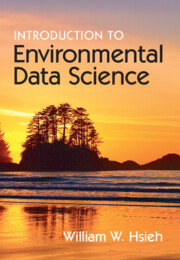X-ray spectromicroscopy is a powerful tool for addressing key questions in the environmental sciences due to its high spectral and spatial resolution. It has been used successfully for material research, biology and environmental studies, e.g. in the form of μ-X-ray fluorescence and spectromicroscopy with a spatial resolution of <100 nm. With the combination of high-resolution microscopy and spectroscopy it is possible to determine elemental composition as well as chemical speciation, and also identify trace elements to nm-resolution. Samples from soils and groundwater aquifers have been imaged to visualize the appearance of structures on the nm- and μm-scale. The effectof changing chemical conditions in an aqueous environment on the appearance of these structures has been imaged and evaluated. Clay dispersions, microhabitats and morphological effects of biologically-induced redox changes of humic substances have been imaged tomographically, conveying a detailed threedimensional presentation of the specimen structure. Using the spectromicroscopy potential, the distribution of organic and inorganic components, as well as different inorganic components, has been studied. Spectra were analysed for major chemical constituents and were used, for example, to assess differentsulphur species in an entire soil profile.


